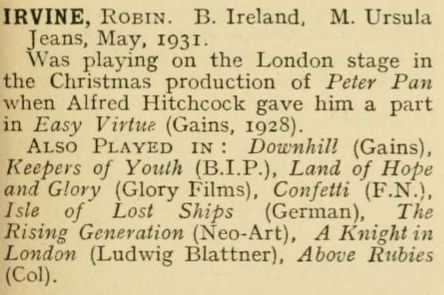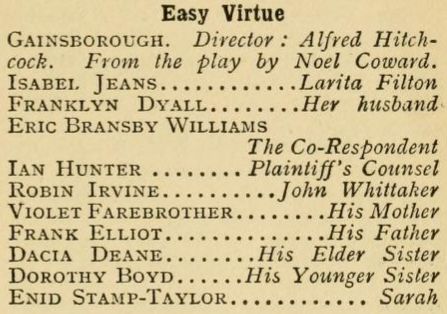This post is part of For the Love of Hitchcock, The Film Preservation Blogathon, hosted again this year by Ferdy on Films (http://www.ferdyonfilms.com/ -- Sunday, Monday) and The Self-Styled Siren (http://selfstyledsiren.blogspot.com/ -- Tuesday, Wednesday), along with Rod of This Island Rod (http://thisislandrod.blogspot.com/ Thursday, Friday).
I hope to contribute these articles this week:
Monday -- Dial HOllywood 9-2411 for Hitchcock
Tuesday -- Hitchcock -- Berdarold, Piccy, London
Wednesday -- Alfred Hitchcock, SRO, RKO, UA, Univ
Thursday -- Hitchcock -- Club: Royal Auto
Friday -- Hitchcock -- He Has Had a Non-Stop Career
Click on images to see larger versions. The image at the top of the page is a full-page ad from The 1963 Film Daily Year Book of Motion Pictures.
Alfred Hitchcock was a rare creative artist in the movie business, but he had to function within the studio system for most of his career. I wanted to document the way he fit in. For this installment of the blogathon, I went through the 1933 World Film Encyclopedia, a British publication edited by Clarence Winchester.
Many industries publish annual books which describe the people who work in them and what they have accomplished. In the film industry, this was a useful way to determine whether someone who said he had worked for DW Griffth or CB DeMille really had. Some of these yearbooks and many other valuable resources are available in the Media History Digital Library (http://mediahistoryproject.org/).
Most sources say Hitchcock was born in 1899.
Graham Cutts directed the movie we are raising funds for, The White Shadow, and Woman to Woman. Hitchcock performed many tasks for both productions. He also directed The Sign of Four, starring Arthur Wontner as Sherlock Holmes.
Betty Compson, an American actress, starred in Woman to Woman and The White Shadow.
Robert Irvine's biographical sketch says he was discovered by Hitchcock.
Phyllis Konstam's entry says Hitchcock spotted her as an extra in Champagne and gave her a part in Murder.
John Longden was the leading man in Hitchcock's Blackmail. He also appeared in The Skin Game and Juno and the Paycock.
"500 Famous Film Casts" does indeed list 500 movies and their casts. Some Hitchcock films made the list.
Graham Cutts directed Woman to Woman. Alma Reville edited. Hitchcock wrote the script and served as art director and assistant director and met Alma Reville.
Downhill was a silent, one of several films Ivor Novello did with Hitchcock.
Easy Virtue was another silent.
Blackmail was the first British all-talkie. It was shot as a silent and then mostly reshot. Leading lady Anny Ondra's accent was impossible, although there is a test reel of her talking to Hitchcock, so her lines were spoken off screen by Joan Barry.
Murder, sometimes Murder!, was a rare Hitchcock whodunnit.
The encyclopedia includes many interesting articles, such as "How Films Began" by Claude Friese-Greene, sone of William Friese-Greene, a pioneering experimenter and subject of the inaccurate biopic The Magic Box.
There are images of several famous actors, including this one of Charlie Chaplin in what appears to be a scene from City Lights.
Maurice Chevalier has always been a favorite of mine.
Mickey Mouse and an animator at work.
I did not know that Fay Wray had a dog named Kong.
Ivor Novello, actor, singer and songwriter, appeared in The Lodger and Downhill for Hitchcock. Elizabeth Allan did not appear in The Lodger.
A map shows the location of Hollwood.
Another map shows the locations of studios in Hollywood.
This map shows the locations of studios in Britain.
Thank you to Ferdy on Films (http://www.ferdyonfilms.com/), The Self-Styled Siren (http://selfstyledsiren.blogspot.com/) and This Island Rod (http://thisislandrod.blogspot.com/) for organizing this blogathon. I'm having fun and learning.
Please consider donating to the National Film Preservation Foundation. For the Love of Film III is raising money to place The White Shadow, a 1923 Graham Cutts movie on which Alfred Hitchcock served as assistant director, on the internet for free viewing.


































2 comments:
Chevalier has always been a favorite of mine as well. Thanks for another fun look at rich paper sources.....
Tinky: You're welcome. Thanks for all the visits. I liked the picture of Fay Wray and her dog, too.
Post a Comment